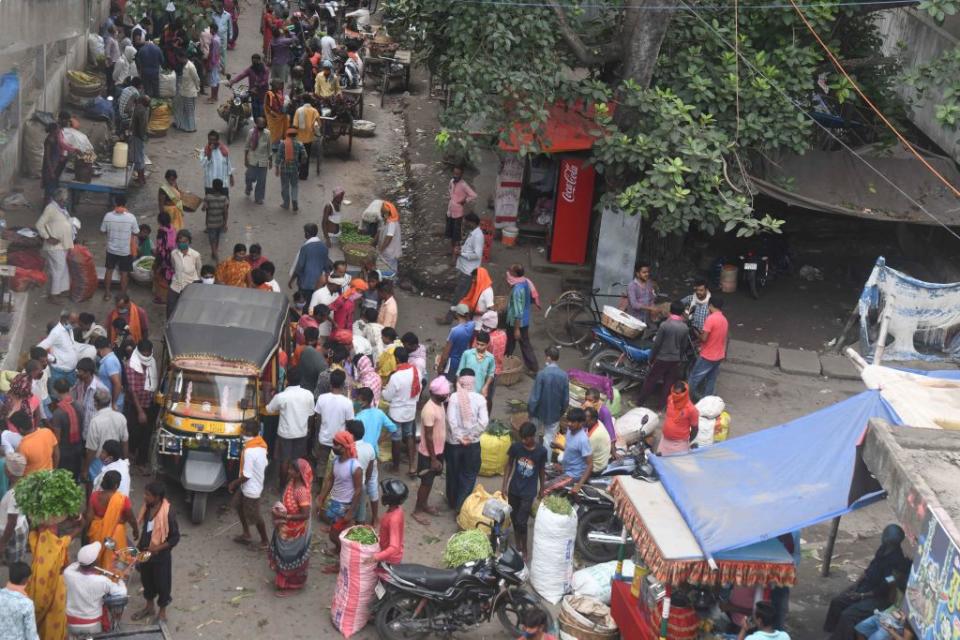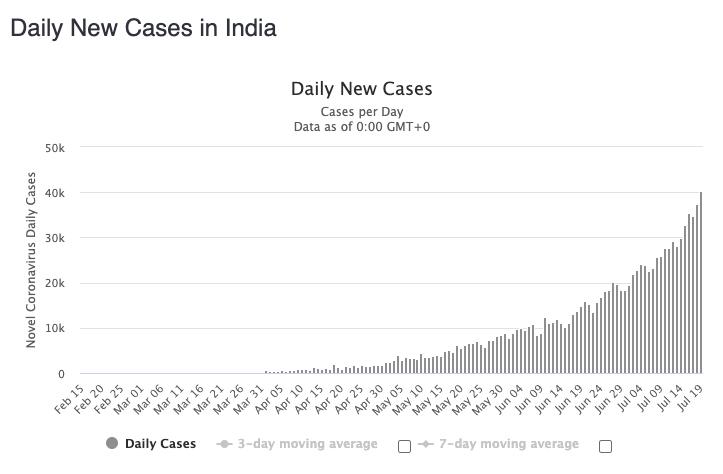Coronavirus India: Disturbing photo emerges from city before 'lockdown'
India’s coronavirus crisis continues to worsen at an alarming rate, recording more than 40,000 cases in a single day for the first time on Sunday.
On Friday, the virus-hit nation became only the third country to surpass the daunting milestone of one million cases after the US and Brazil.
On Sunday India recorded 675 deaths, the tenth consecutive day it has recorded more than 500 daily deaths.
Governments have rushed to try and stop the alarming surge in cases with a series of measures including new lockdowns, however, authorities fear measures being implemented aren’t being followed.
The state of Bihar, which is home to 128 million, was sent into a 16-day lockdown on Thursday.
However, daunting images from the state’s capital Patna at the beginning of the lockdown revealed how the restrictions were being completely ignored en masse.

Dozens of people can be seen crowded together at a local market, many not wearing face masks.
Sushil Kumar Modi, the Deputy Chief Minister of Bihar, said since nationwide restrictions began to ease, the rules were regularly flouted, fuelling the surge in cases.
“Very few people were wearing face masks and social distancing norms were seldom being followed,” he said.
“Large gatherings were seen in markets and people went out without any essential work.”
In Uttar Pradesh, the most populous state with more than 200 million people, authorities have started placing residents under strict weekend curfews, which will remain in place until the end of the month.
Other local governments are increasingly focusing on smaller lockdowns that shield the economy.

Nearly a dozen states have imposed restrictions on “containment zones” — areas that can be as small as a few houses or a street.
Experts repeatedly voice concerns over urban slums, which are believed to be hotspots for the virus’s spread.
Dr Anant Bhan, a global health researcher, said that India was likely to see “a series of peaks,” as the infection spreads outside of India’s major cities and into rural areas.
He pointed out that the capital of New Delhi and the financial capital, Mumbai, had already seen surges, while infections have now shifted to smaller cities.

Delhi was predicted to reach half a million coronavirus cases by the end of July but thanks to ramped up testing and door to door check ups, it has managed to curtail the spread of the virus in the megacity.
India’s initial response to the virus has been criticised as being too late with the virus spreading widely across the nation, while the time bought by lockdown restrictions wasn’t utilised with testing remaining low.
Focus was placed on increasing the nation’s health care capacity however it is one of the most chronically underfunded in the world and access to hospitals in rural areas is very low.
Experts say the challenge for India will be to balance the opening up of the economy while trying to restrict the increase in cases to manageable levels that don’t overwhelm hospitals.
with AP
Do you have a story tip? Email: newsroomau@yahoonews.com.
You can also follow us on Facebook, Instagram and Twitter and download the Yahoo News app from the App Store or Google Play.



